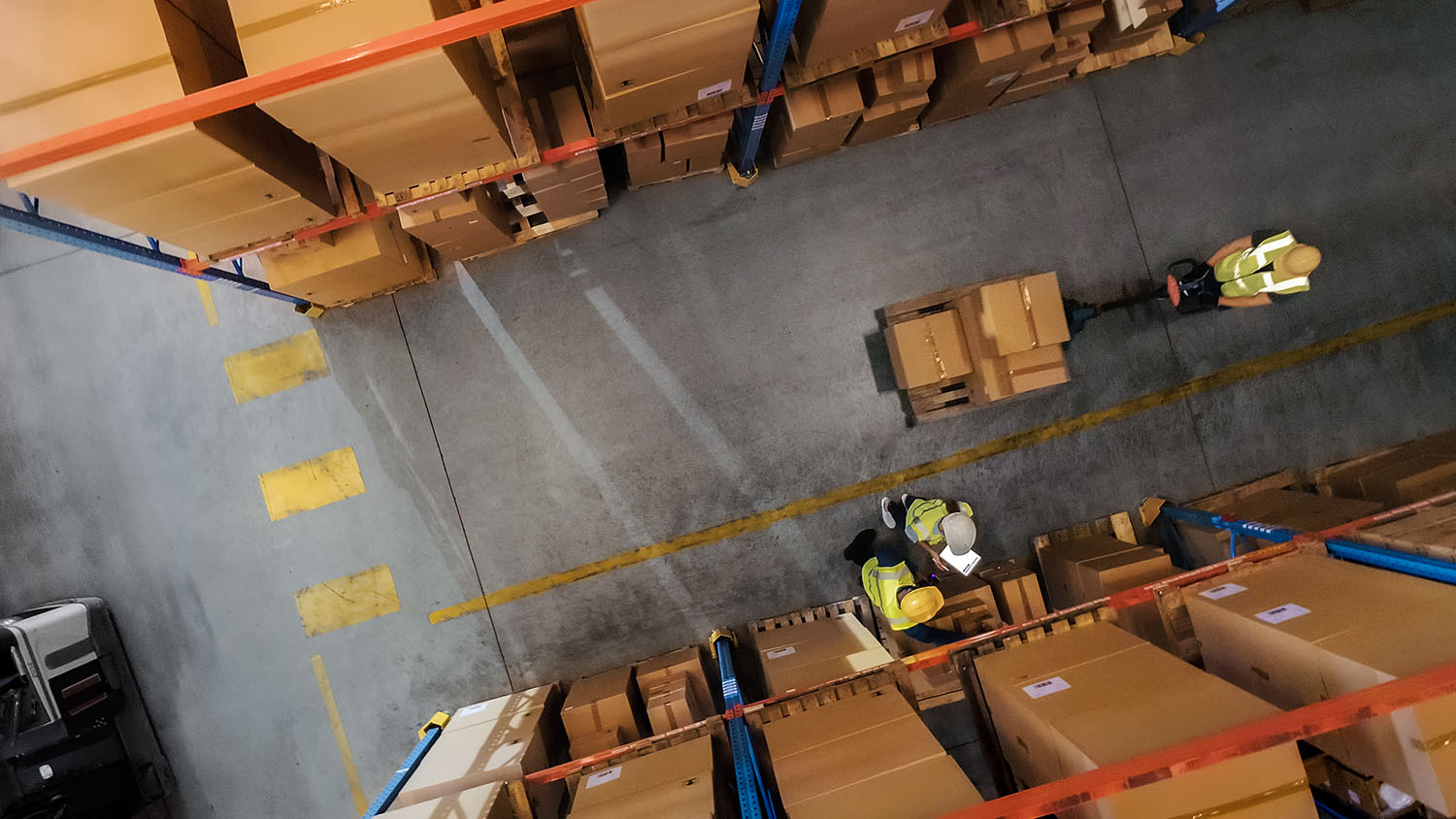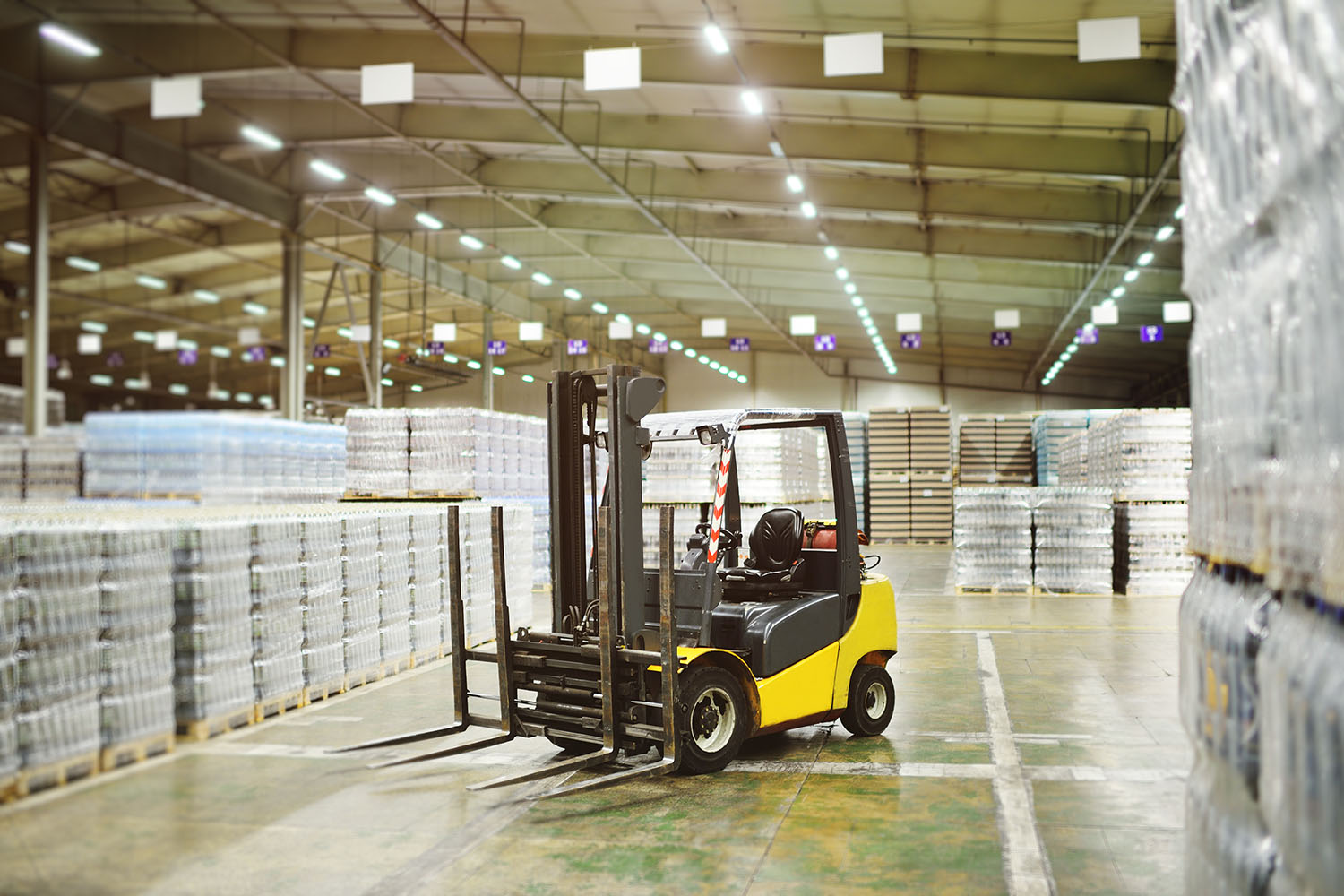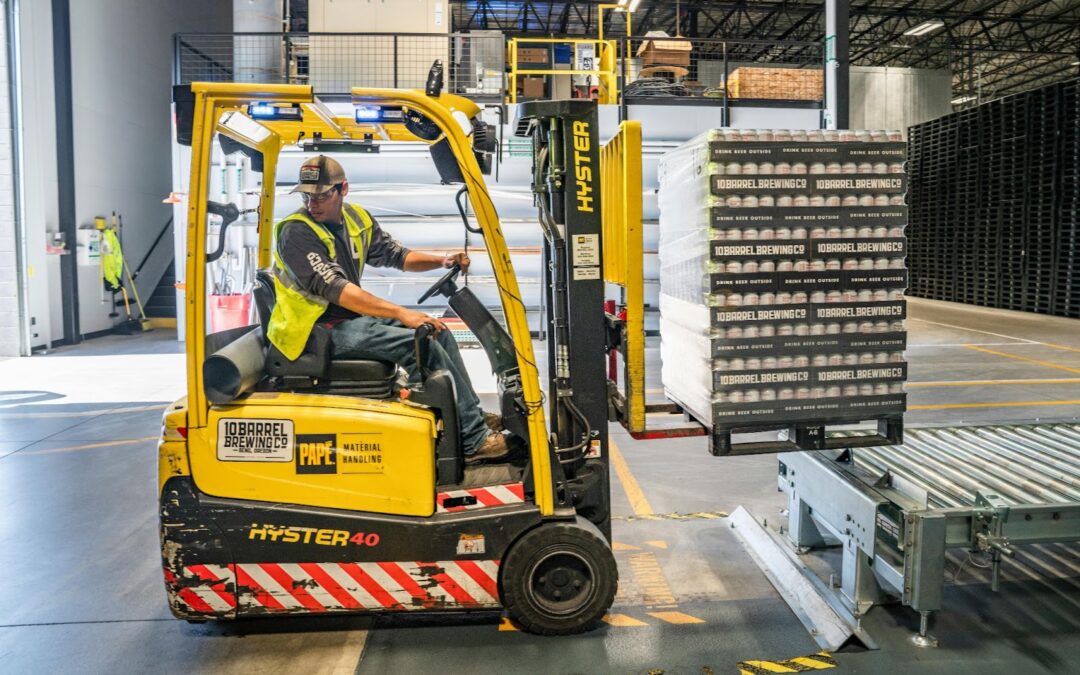In the past, warehouse management simply meant having a large space, recording inventory, and fulfilling orders on time. However, there is now more to warehouse management than a large space and manual processes.
Today, automation makes it easier to run the warehouse, removing room for error and increasing productivity. With automated warehouse systems, businesses and third-party logistics companies, or 3PLs, can have full confidence in their processes and meet deadlines.
In this article, we will explore warehouse automation, why it’s important for your business and the types of technologies that can make your business a force in logistics.
What is Warehouse Automation?
Warehouse automation is the process of using technology to streamline and handle warehouse operations with minimal human intervention, improving efficiency and reducing errors. This technology reduces repetitive, laborious work like inventory management, improving the speed and accuracy of each task.
Warehouse automation was not always common. Only about 5% of warehouses were automated in the past. Today, about one-quarter of warehouses are heavily invested in automation. Exciting interest can be seen in industries like CPG, which was once slow to adopt automation in its warehouses.
“Even in industries like CPG, you are seeing some really significant changes,” says Andy Williams, a supply chain expert and executive vice-president at Exotec, a robotics and logistics company.
“They didn’t have e-commerce a few years ago, but now it’s their fastest growing channel. With modern robotics technology, you are able to do things that weren’t possible before. You can use the same amount of workers to accomplish 400% improvement throughout without expanding the facility.”
Studies show that revenue from warehouse automation is projected to grow double-digit in 2025. Throughout the industry today, warehouse managers are analyzing what investments to make in automation, how quickly they can pay off, and what they risk in lost productivity or business lost to more automated competitors if they wait on such investments. Warehouse automation does not completely depend on devices or robotics. In many cases, it simply involves using software to replace manual operations, merging robotic intelligence with human processes to handle repetitive tasks while reducing fatigue.
For example, a human can load a heavy package onto a mobile warehouse robot, which can transport it across the warehouse to the shipping zone while the WMS tracks the movement and maintains up-to-date records.
Understanding Different Levels of Automation
Warehouse automation can be broken into three main levels: basic, systems, and advanced. Each level represents a higher level of integrating technology to improve efficiency, reduce manual labor, and streamline operations..
Basic Automation
This level includes simple tools and machines that enhance manual processes. Some examples are conveyor belts, barcode scanners, and handheld devices for inventory management. Many companies start at this level to address repetitive, labor-intensive tasks. For instance, automating order picking or labeling or a conveyor moving parcels from one point to another in the warehouse.
Systems Automation
Systems automation involves integrating technology with software solutions for better workflows. A Warehouse Management System (WMS) is needed at this level for better visibility, improving inventory placement, and managing the order fulfillment processes. At this stage, companies might implement automated guided vehicles (AGVs) or automated storage and retrieval systems (AS/RS) to complement their WMS and reduce human intervention in routine tasks.
Advanced Automation
Advanced automation represents near-complete or fully autonomous warehouse operations. This level includes robotics, AI-powered systems, and predictive analytics. Some examples are robotic picking systems, drones for inventory checks, and machine learning algorithms that can predict demand. At this level, a powerful WMS is the brain of operations, ensuring all automated systems communicate and function seamlessly. There is minimal human involvement in a fully automated warehouse as all processes are managed by integrated hardware and software systems.
What Warehouse Processes Can Be Automated?
You can automate many warehouse processes like cycle counting, receiving, returns, etc., using the right automated warehouse management system. Some of the processes in this category are:
Receiving
Using a mobile app on their smartphone, warehouse workers can scan incoming items at the receiving dock. This data automatically syncs with the warehouse management system (WMS), which updates both incoming inventory (upstream) and outgoing orders (downstream) in real-time..
Returns
Sorting systems like conveyors can be used to sort through products that should be returned to shelves or put away in specific storage.
Putaway
The putaway process involves moving products from receiving to storage. Automated processes can make this process more efficient where barcode scanners or RFID systems capture product data and send it to a Warehouse Management System (WMS). The software then determines the best storage location based on factors like size, type, and demand. Following instructions from the WMS, AGVs or conveyors can then transport the products to the right locations. Automating putaway can also positively influence cross-docking, where products can be stored quickly, processed, and loaded onto trucks going to delivery locations instead of being kept at the warehouse.
Picking
Manual order picking is the most expensive warehouse process, as the travel time between aisles can take up to half the work hours. However, an automated Goods-to-people (GTP) system can improve the speed at which inventory moves from the stock locations to customers’ doorsteps without error.
Sorting
Sorting and consolidating inventory also requires a lot of valuable work hours and can be confusing. Automated sortation, however, can improve accuracy and quality control by noting the size and fragility of the product and sorting it accordingly.
Replenishment
When the number of a specific product reaches a designated shortage limit, the system triggers an order and approval request for more of that item. This reduces the risk of spoilage, theft and overstocking costs.
Packaging
The packaging process needs a lot of attention as it is cost-intensive and impacts the environment. Automated packing systems use algorithms to decide on the best type of packaging based on the type of product, dimensions, and cost of materials.
Shipping
Automated shipping systems use conveyors, dimension sensors, and scales to estimate shipping rates and apply labels to packages.
Benefits of Warehouse Automation
Warehouse automation is an important part of the supply chain’s day-to-day activities, and it brings great value to businesses, warehouse managers, and other shipment specialists.
Here are some warehouse automation benefits:
Fewer errors
Warehouse automation can help reduce wrong order shipments and other errors through a sortation process that analyzes the products and matches them with the exact order in the inventory.
Improve employee efficiency
Automation improves efficiency, as workers are not burdened with lifting heavy packages. Routes are better optimized, and item locations are identified almost instantaneously, making it easy for workers to focus on aspects of the work that actually require human expertise. Robots, conveyors, etc., also lead to faster order fulfilment, allowing businesses to offer next-day or overnight deliveries.
Increased productivity
A warehouse automation management system can help plan the best routes for robots, especially in warehouses with high human traffic. This leads to faster order fulfilment. The system also identifies the location of items so that workers spend less time finding and moving goods.
Maximized space usage
Your WMS can draft and implement order arrangements so that robots can put packages accordingly, thereby maximizing space. These guided vehicles can retrieve and store packages without needing large aisles to accommodate workers and large pallets.
Improved inventory management
Automation can improve inventory management by recording orders as they arrive, reducing the risk of missing orders. It can also track the movement of packages from the receiving point to shipment.
Types of Warehouse Automation Technologies
Here are the different types of warehouse automation solutions available:
Goods-to-person (GTP)
This picking technology brings the item to the worker as opposed to the worker travelling to pick the items. The technology makes use of a central database to retrieve or enter orders, and then the automated equipment locates the item in the warehouse, picks it up and delivers it to the worker. GTP technology is easily the most popular method of optimizing processes for speed. Companies that use this technology often see a higher output than companies that use manual processes. It also helps reduce congestion using equipment like carousels, conveyors, and vertical lift systems.
Automatic guided vehicles (AGVs)
AGVs are basically robots that use wires or sensors and magnetic strips to move along a fixed path in a warehouse. Just think of them as remote-controlled cars transporting items from one point to another. Usually, AGVs have a wide range of capabilities, and you can choose the option that works best for your warehouse. For example, automated carts can move items from warehouses to manufacturing plants. A drawback is that AGVs only work within large warehouses with little to no human presence. So, complex warehouses with a lot of human traffic and space issues are not good fits for such technology.
Automated storage and retrieval systems (AS/AR)
This system is a form of GTP technology that stores and retrieves products using tote shuttles, material-carrying vehicles and mini-loaders. It brings goods in and out of storage and is usually paired with a powerful WMS that manages the entire process. AS/AR is a great fit for warehouses that process a high volume of goods but have space constraints.
Autonomous mobile robots (AMRs)
Often used in ecommerce fulfilment warehouses that have high volume packages to sort through. This system is more flexible than AGVs, as it helps create effective routes for specific warehouses. It uses lasers to detect obstacles so it can move around environments with human traffic. AMRs work with manual pickers, fill up their totes and transport items to the pack station. You can easily program and implement AMR in no time.
Automated sortation system
Automated sortation involves using barcode scanners, sensors and RFID to identify items on the conveyor and direct them to different warehouse locations. This tool is particularly useful for order fulfilment as it covers receiving, packaging, and shipping.
Pick-to-light system
In a pick-to-light system, LED displays mounted on warehouse shelves light up to guide workers to the exact location of items that need to be picked. When a worker scans an order’s barcode, the system automatically illuminates the LED lights at each shelf location containing items for that order.. Once done, the worker places the items in the right container and presses a button near the display to confirm task completion. This technology is particularly useful for high-volume warehouses as it helps reduce walking time and helps prevent picking errors.
5 Warehouse Automation Trends
The future of warehouse automation lies in technological advancements and rising customer expectations. Warehouses of the future won’t just store goods but also will serve as a hub for integrating technologies to meet the rising needs of modern commerce.
Here are some of the trends in warehouse automation that are rapidly changing the industry.
Artificial intelligence and machine learning
Artificial intelligence is transforming inventory management by analyzing large amounts of data to provide insights warehouse managers can follow to anticipate demand for certain products while minimizing the risk of overstocking. Machine learning provides predictive analysis that warehouses can use to forecast trends and adapt quickly ahead of the season. It takes into account weather conditions, purchasing patterns and seasonal spikes.
Autonomous mobile robots (AMR)
AMRs transform how warehouses handle materials as they use sensors to navigate changing environments and adapt in real-time. They are great at picking, packing and transforming goods, relieving humans to handle more complex tasks. You can integrate them into systems to work 24/7 due to improvements in battery technology.
Improving connectivity and visibility
Internet of Things (IoT) is a game changer in warehouse automation as it employs sensors and tracking systems that provide data insights into day-to-day activities and improve inventory management and decision-making. IoT sensors can check goods for quality and make sure that all goods are in the right storage area to maintain standards. If there are errors, the sensors will trigger alerts to effect corrections.
Aligning automation with environmental goals
Energy-efficient systems are essential for sustainability goals. Automated lighting and climate control will help regulate storage conditions while optimizing resource use. AI can calculate the exact amount of packaging that should be used, reducing waste. Recycling systems also help further increase waste management efficiency.
Renewable energy, such as solar energy, also provides constant power sources that reduce the gas waste that can come from generators.
Human-robot synergy
Collaborative robots or cobots will improve human-robot interactions as they are designed to work with employees. This improves productivity while maintaining safety. Cobots can handle repetitive tasks and reduce worker strain. At the same time, the employees can focus on problem-solving and decision-making based on insights obtained from AI. Coobots are easier to implement as they reduce the cost of warehouse automation than traditional robots.
Warehouse Automation FAQs
What are the three levels of warehouse automation?
The three levels of warehouse automation are basic, system, and advanced. Each level has an increasing level of technological assistance that helps humans interact more with robots, improving efficiency.
How do I choose the right automation solutions for my warehouse?
Selecting the right automation solutions and building detailed automation roadmap requires careful analysis of myriad factors that generally requires adoption of a WMS like Da Vinci’s. Only with an WMS that can assess your current order volumes and patterns, map your warehouse layout and workflows, and help you forecast business growth can you determine what automation will get the best return.
What are the trends in warehouse automation?
Some trends in warehouse automation include inventory tracking, automated mobile robots, artificial intelligence, wearables and collaborative robots.
What is the future of warehouse automation?
Warehouse automation is expected to involve more and more collaboration between humans and robots, essentially inventing a hybrid workflow that boosts productivity and efficiency.
What challenges should I expect when automating my warehouse?
You can expect challenges associated with maintenance costs, dependence on technology, upfront costs of warehouse automation and limited flexibility of automated robots.
Automation is the Future—Are You Ready?
Automation starts with a good Warehouse Management System (WMS) like Da Vinci. This system can consider factors like warehouse layout and stock orders, which can directly impact the automated solutions you can employ.
Warehouse automation offers many benefits, such as increased productivity, reduced errors, and better space usage. In the long term, it is wise to apply it to your supply chain business. The future of warehouse automation lies in combining human efforts with machine efficiency to create a truly efficient system.
Take a leap automating your warehouse and request a demo from Da Vinci to get started.



